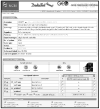Gene expression omnibus: microarray data storage, submission, retrieval, and analysis
- PMID: 16939800
- PMCID: PMC1619900
- DOI: 10.1016/S0076-6879(06)11019-8
Gene expression omnibus: microarray data storage, submission, retrieval, and analysis
Abstract
The Gene Expression Omnibus (GEO) repository at the National Center for Biotechnology Information archives and freely distributes high-throughput molecular abundance data, predominantly gene expression data generated by DNA microarray technology. The database has a flexible design that can handle diverse styles of both unprocessed and processed data in a Minimum Information About a Microarray Experiment-supportive infrastructure that promotes fully annotated submissions. GEO currently stores about a billion individual gene expression measurements, derived from over 100 organisms, submitted by over 1500 laboratories, addressing a wide range of biological phenomena. To maximize the utility of these data, several user-friendly web-based interfaces and applications have been implemented that enable effective exploration, query, and visualization of these data at the level of individual genes or entire studies. This chapter describes how data are stored, submission procedures, and mechanisms for data retrieval and query. GEO is publicly accessible at http://www.ncbi.nlm.nih.gov/projects/geo/.
Figures




References
-
- Altschul SF, et al. Basic local alignment search tool. J Mol Biol. 1990;215:403–410. - PubMed
-
- Ball C, et al. Microarray Data Standards: An Open Letter. PLoS Biol. 2004;2:23–24.
-
- Brazma A, et al. Minimum information about a microarray experiment (MIAME)-toward standards for microarray data. Nat Genet. 2001;29:365–371. - PubMed
-
- Brockington M, et al. Localization and functional analysis of the LARGE family of glycosyltransferases: significance for muscular dystrophy. Hum Mol Genet. 2005;14(5):657–665. - PubMed
Publication types
MeSH terms
LinkOut - more resources
Full Text Sources
Other Literature Sources

